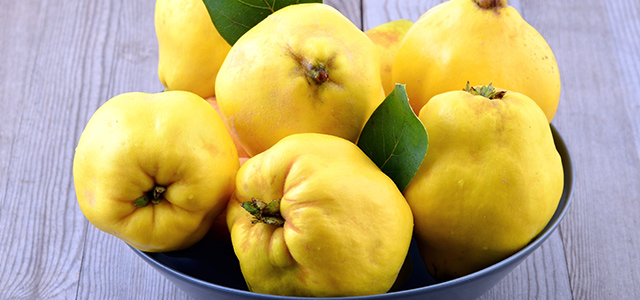What are quinces and how are they eaten?

Apples? Pears? No, quinces! These autumn fruits are in season now and we are big fans. But what exactly are quinces and can they also be eaten raw? We have the low-down!
What are quinces?
Quinces are a member of the rose family and originally come from the Caucasus. They are small, yellow fruits that look like apples and pears. In fact, they are related to both of these fruit types, which is why a distinction is also made between the hard, somewhat bitter apple quince and the softer, milder pear quince. However, this only relates to the shape of the fruit and does not mean that quinces are a mix of apples and pears. Both types have a yellow, slightly downy skin and a core inside. They have an aromatic, fruity and lemony taste, but only once they have been cooked. Out of approximately 200 quince varieties, only very few are suitable for eating raw; most varieties have a bitter taste.
What’s inside?
The flesh of the quince is a rich source of vitamin C, potassium, sodium, zinc, iron, copper, manganese and fluorine. This autumn fruit also contains tannins, tannic acid, organic acids and a lot of pectin. As a result, quinces are believed to have health benefits, for example in the case of throat infections and intestinal disorders. Apart from the flesh, however, the core of the quince is particularly useful for medicinal purposes. The seeds contain a lot of mucilage, which can help to relieve a tickly throat for example. The active ingredients in quince seeds can also help to heal cracked skin and burns. Do not grind the seeds, however, as they also contain hydrocyanic acid.
How can quinces be eaten?
Quince are naturally hard and woody and have a sour taste. You should not eat them raw, it is best to cook them. Their high pectin content make them ideal for jams, jellies and juices. This natural gelling agent means that you will need little or no additional binding agent. Before cooking, remove the down on the skin of the quince, which contains bitter-tasting compounds. A rough cloth is the best way to do this. All you have to do then is peel the fruit, core it, chop it up finely and boil or stew it.
Our tip: Prevent quinces from going brown during cooking by sprinkling some lemon juice on them.
Your Dole Team

